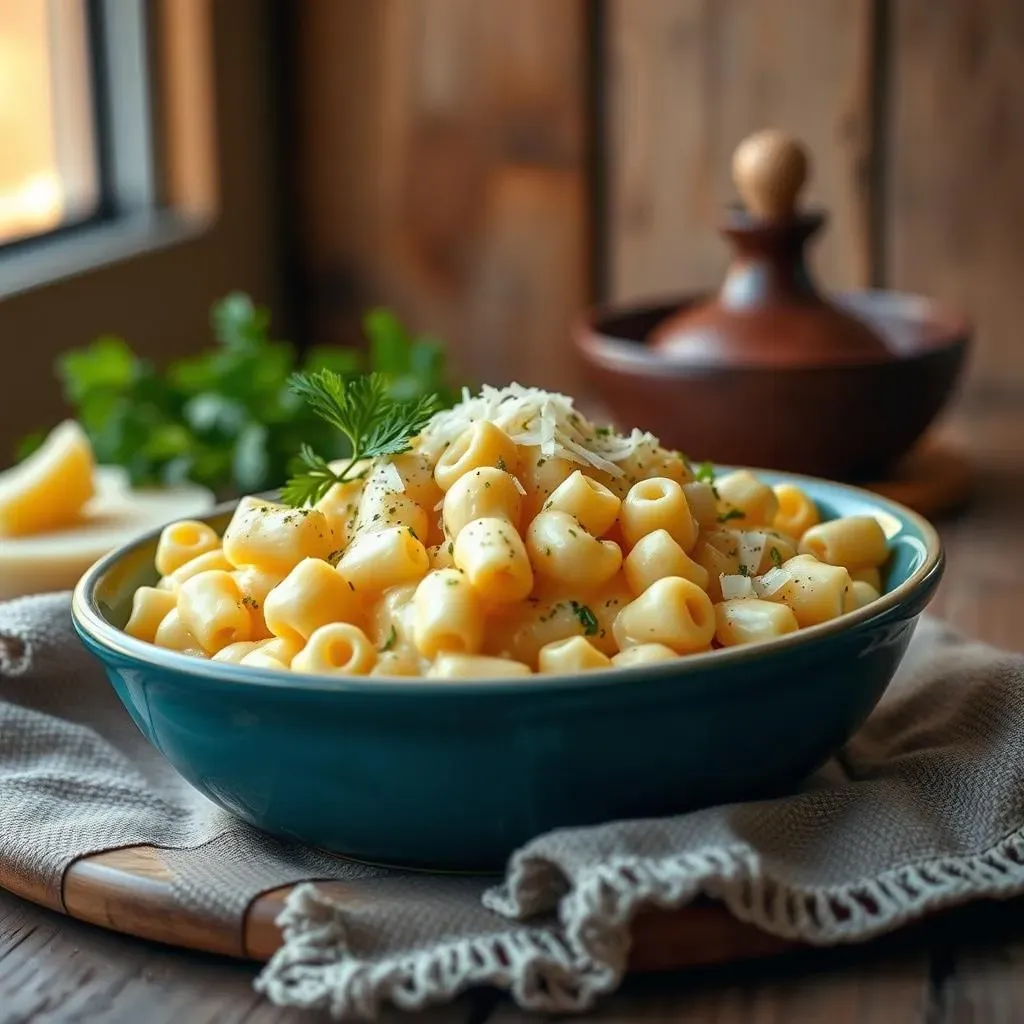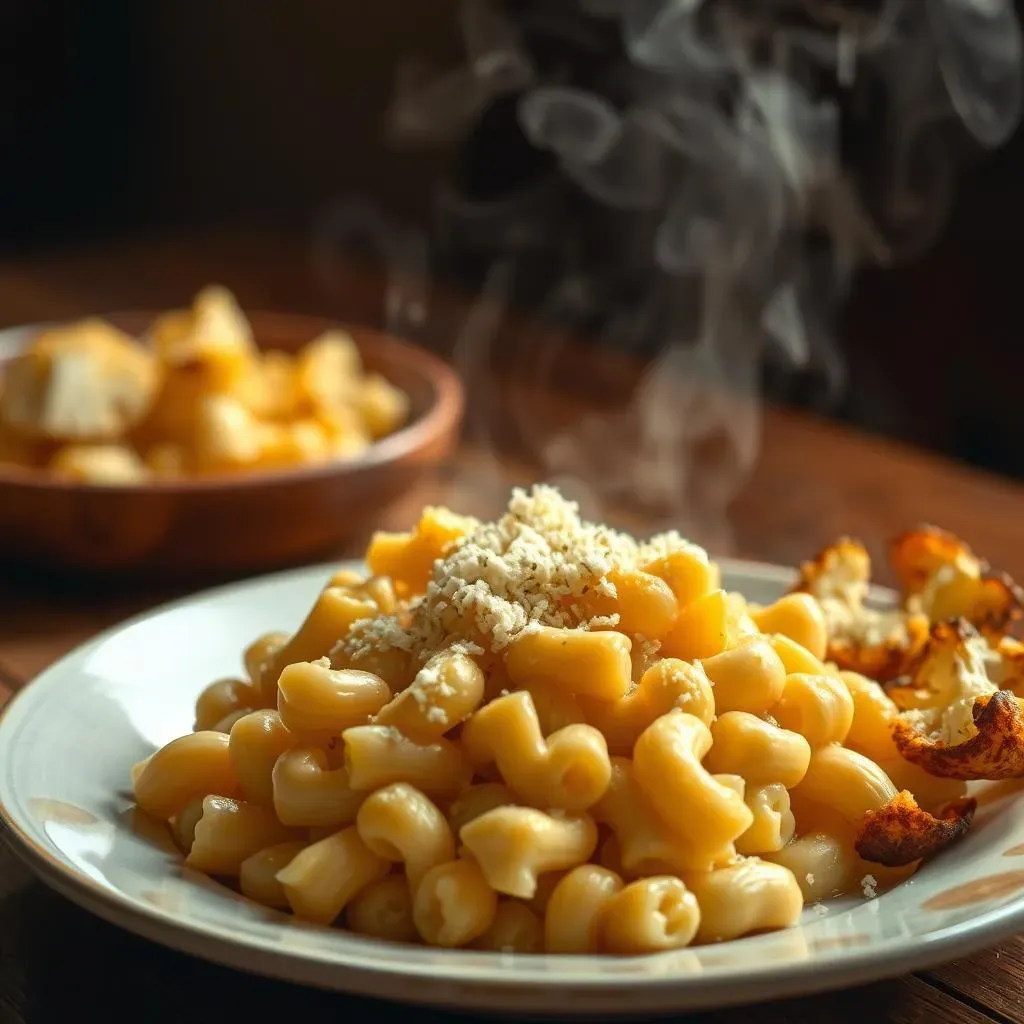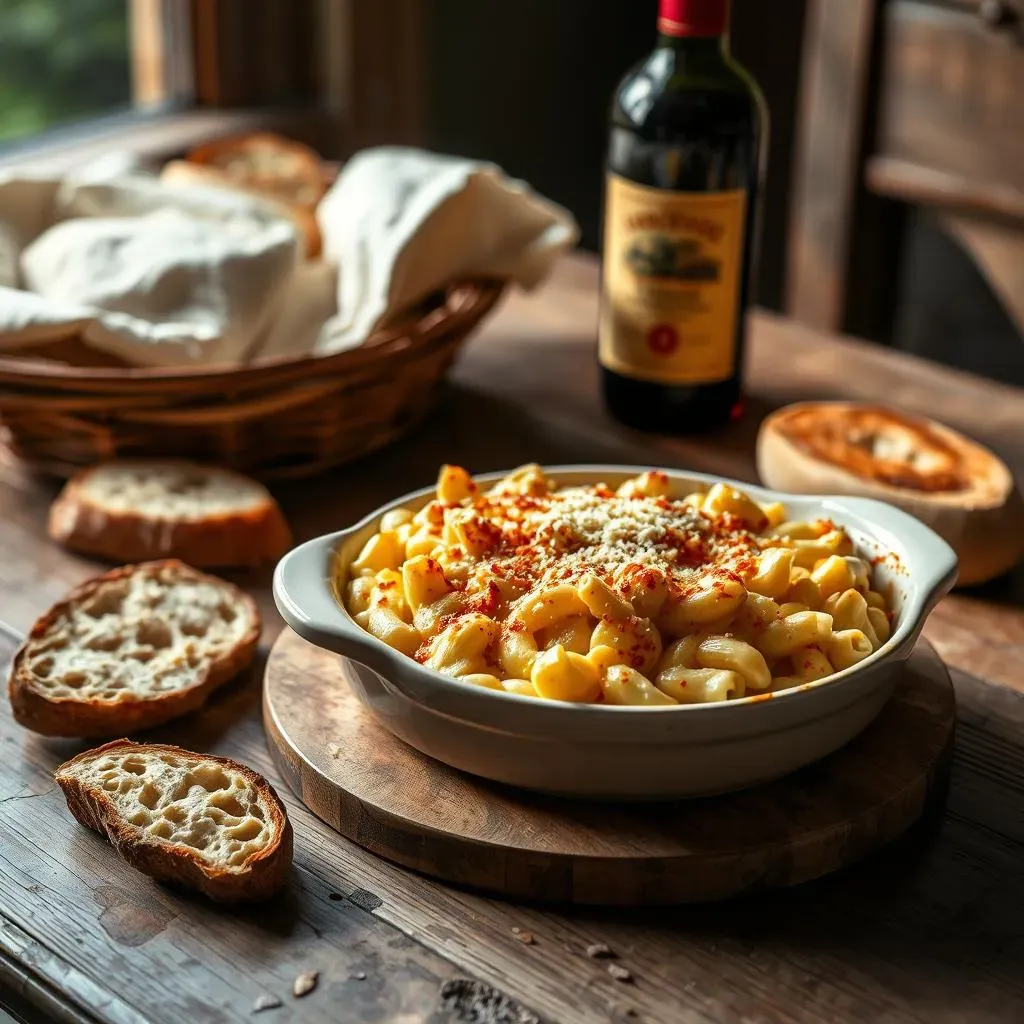Table of Contents
Craving that creamy, cheesy goodness of mac and cheese but trying to keep things low-carb? You're not alone! Let's face it, sometimes you just need that comfort food fix. That's where this recipe for **low-carb mac and cheese with fontina** comes to the rescue. We're ditching the traditional pasta and using a clever swap that doesn't skimp on flavor or satisfaction. This guide will walk you through everything you need to know to create a truly delicious and guilt-free version of this classic dish. We'll share our top tips for making it extra cheesy and flavorful, break down the key ingredients you'll need, provide easy-to-follow step-by-step directions, and even give you advice on how to store any leftovers (if there are any!). Get ready to enjoy a warm, comforting bowl of **low-carb mac and cheese with fontina** that will have you forgetting all about the carbs.
Tips for the Best LowCarb Mac and Cheese with Fontina

Tips for the Best LowCarb Mac and Cheese with Fontina
Roasting the Cauliflower is a Game Changer
Seriously, don't skip this step. I know it adds a little extra time, but roasting the cauliflower instead of just steaming or boiling it brings out a sweetness and depth of flavor that you just can't get otherwise. Plus, it helps to release some of the moisture from the cauliflower, which is key to preventing a watery mac and cheese. Think about it like this: you're concentrating all that good cauliflower flavor. Trust me, your taste buds will thank you.
Think of it like roasting vegetables for any other dish. That slight caramelization? That's where the magic happens. It takes the cauliflower from being a bit bland to having a nutty, almost sweet undertone that complements the richness of the cheese perfectly.
Cheese Selection Matters (Fontina is Your Friend!)
While fontina is the star of the show here, don't be afraid to play around with other cheeses too. A good sharp cheddar will add a nice tang, and a little bit of Gruyere brings in a nutty complexity. The key is to use cheeses that melt well and have distinct flavors that complement each other. Avoid pre-shredded cheese if you can, as it often contains cellulose that can affect how smoothly it melts. Freshly grated cheese is the way to go for ultimate creaminess.
Don't Forget the Flavor Boosters
This is where you can really make your low-carb mac and cheese sing! Think beyond just cheese and cauliflower. A little bit of Dijon mustard adds a subtle zing that cuts through the richness. Garlic powder or roasted garlic adds another layer of flavor. And don't underestimate the power of a pinch of nutmeg – it sounds a little unexpected, but it adds a warm, comforting note that's classic in mac and cheese. A dash of hot sauce at the end can also give it a nice little kick, if you're into that sort of thing.
Flavor Booster | Why it Works |
|---|---|
Dijon Mustard | Adds a tangy counterpoint to the richness. |
Garlic Powder/Roasted Garlic | Provides a savory depth. |
Nutmeg | Offers a warm, comforting aroma and flavor. |
Hot Sauce (Optional) | Adds a touch of heat and excitement. |
Key Ingredients for Your LowCarb Fontina Mac and Cheese

Key Ingredients for Your LowCarb Fontina Mac and Cheese
The Star of the Show: Cauliflower
Alright, let's talk cauliflower. This isn't your grandma's mushy, boiled cauliflower. We're talking about a blank canvas that's ready to soak up all that cheesy goodness. For this recipe, you'll want a good-sized head of cauliflower, broken down into florets. Think of them as the stand-ins for your usual macaroni – they've got the right shape and texture to hold onto that sauce like champs. Don't be tempted to use pre-cut florets unless you're in a real time crunch; sometimes they can be a bit dry. Fresh is definitely best here.
Funny story, the first time I tried making this, I was lazy and used frozen cauliflower. Let's just say the result was...watery. Live and learn, right? Fresh cauliflower, roasted properly, is the key to avoiding that soggy mess and getting that perfect "mac" texture without the actual mac.
The Cheese Dream Team: Fontina and Friends
Now for the good stuff – the cheese! Fontina is our headliner for a reason. It's a fantastic melting cheese, which is crucial for that smooth, velvety sauce we're after. It has a lovely, mild, slightly nutty flavor that isn't too overpowering, letting the other flavors shine. But, like any good team, fontina benefits from some backup. I like to pair it with a sharp cheddar for that classic mac and cheese tang. A little Parmesan, freshly grated of course, adds a salty, umami punch. Don't be afraid to experiment a bit, though. Gruyere or even a smoked Gouda can bring interesting depths of flavor to the party.
Just remember, the quality of your cheese really makes a difference. Go for the good stuff – it's worth it. And seriously, grating it yourself is non-negotiable. Pre-shredded cheese has anti-caking agents that can prevent it from melting as smoothly. We want luscious, not clumpy!
StepbyStep to Delicious LowCarb Mac and Cheese

StepbyStep to Delicious LowCarb Mac and Cheese
Getting Started: Roasting the Cauliflower
First things first, let's get that cauliflower roasted. Preheat your oven to 375°F (190°C). While the oven is heating, chop your cauliflower into bite-sized florets. Toss them with a bit of olive oil, salt, and pepper on a baking sheet. Spread them out in a single layer – overcrowding will steam them instead of roasting. Pop that tray into the oven and let the cauliflower work its magic for about 20-25 minutes, or until it's tender and slightly golden brown. You want those little caramelized bits; that's where the flavor lives!
Crafting the Cheesy Sauce
While the cauliflower is roasting, let's whip up the cheese sauce. In a saucepan over medium heat, melt some butter. Once melted, whisk in some flour (almond flour works great for keeping it low-carb) and cook for about a minute, stirring constantly. This creates a roux, which helps to thicken the sauce. Slowly whisk in some warm milk or heavy cream until smooth. Bring it to a simmer, stirring occasionally, until it starts to thicken. Now comes the best part: reduce the heat to low and stir in your grated fontina, cheddar, and any other cheeses you're using. Stir until everything is melted and smooth. Season with salt, pepper, Dijon mustard, garlic powder, and a pinch of nutmeg. Don't be shy – taste and adjust the seasonings as needed!
Bringing It All Together
Once the cauliflower is roasted and the cheese sauce is gloriously melty, it's time to combine them. Add the roasted cauliflower to the saucepan with the cheese sauce and gently stir to coat everything evenly. If you're feeling fancy, you can transfer the mixture to a baking dish, top it with some extra cheese or a sprinkle of crushed pork rinds for a bit of crunch, and bake it in the oven for another 10-15 minutes until it's bubbly and golden brown. However, if you're impatient (like me!), you can totally skip the baking step and serve it straight from the stovetop. Garnish with a sprinkle of fresh parsley or a dash of hot sauce, if desired. Get ready to dig in!
Making & Storing Your LowCarb Mac and Cheese with Fontina

Making & Storing Your LowCarb Mac and Cheese with Fontina
Alright, so you've made this glorious, cheesy creation. Now what? Well, if you're serving it right away, kudos to you! Just scoop it up and enjoy that warm, comforting goodness. But let's say you have some leftover (lucky you!) or you want to make it ahead of time. Storing it is a breeze. Just let it cool down a bit, then pop it into an airtight container and stash it in the fridge. It'll keep happily for about 3 to 4 days. When you're ready to revisit that cheesy heaven, you've got a couple of options for reheating. My personal favorite is to pop it back in the oven – a low temperature, around 325°F (160°C), works best. Add a splash of milk or cream to keep it from drying out and bake until it's heated through and bubbly again. You can also microwave it in a pinch, but be sure to stir it occasionally to ensure even heating. Nobody wants a cold spot in their mac and cheese emergency!
Storage Tip | Best For |
|---|---|
Airtight Container in Fridge | Leftovers (3-4 days) or making ahead |
Reheating in Oven (325°F/160°C) with a splash of milk/cream | Best texture and flavor retention |
Microwaving (stir occasionally) | Quick and easy reheating |